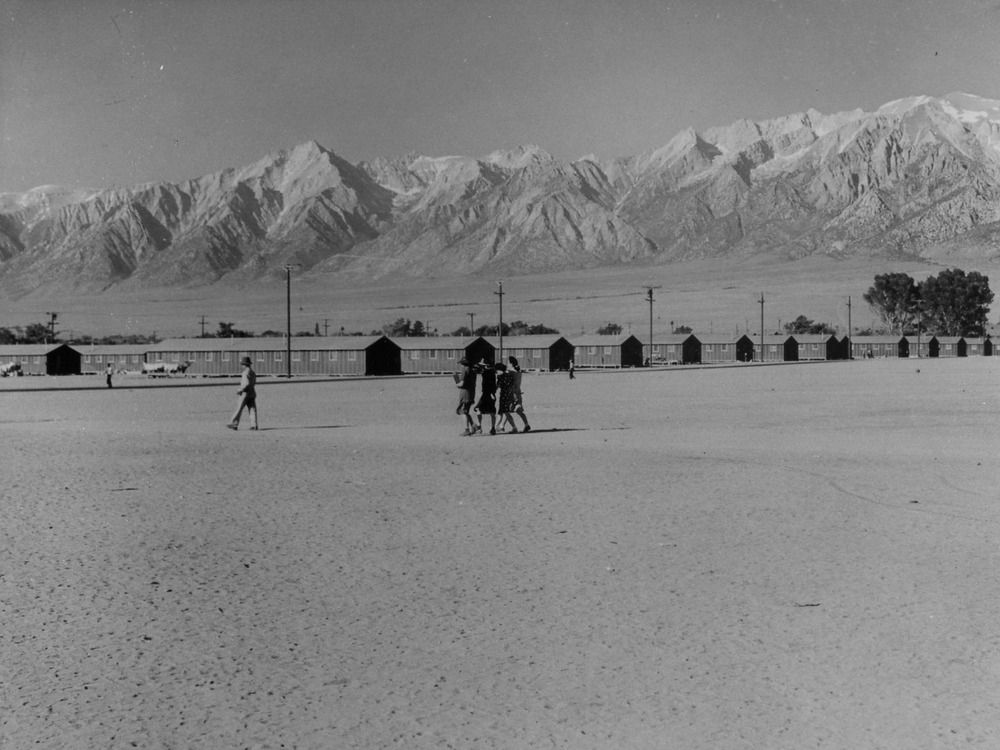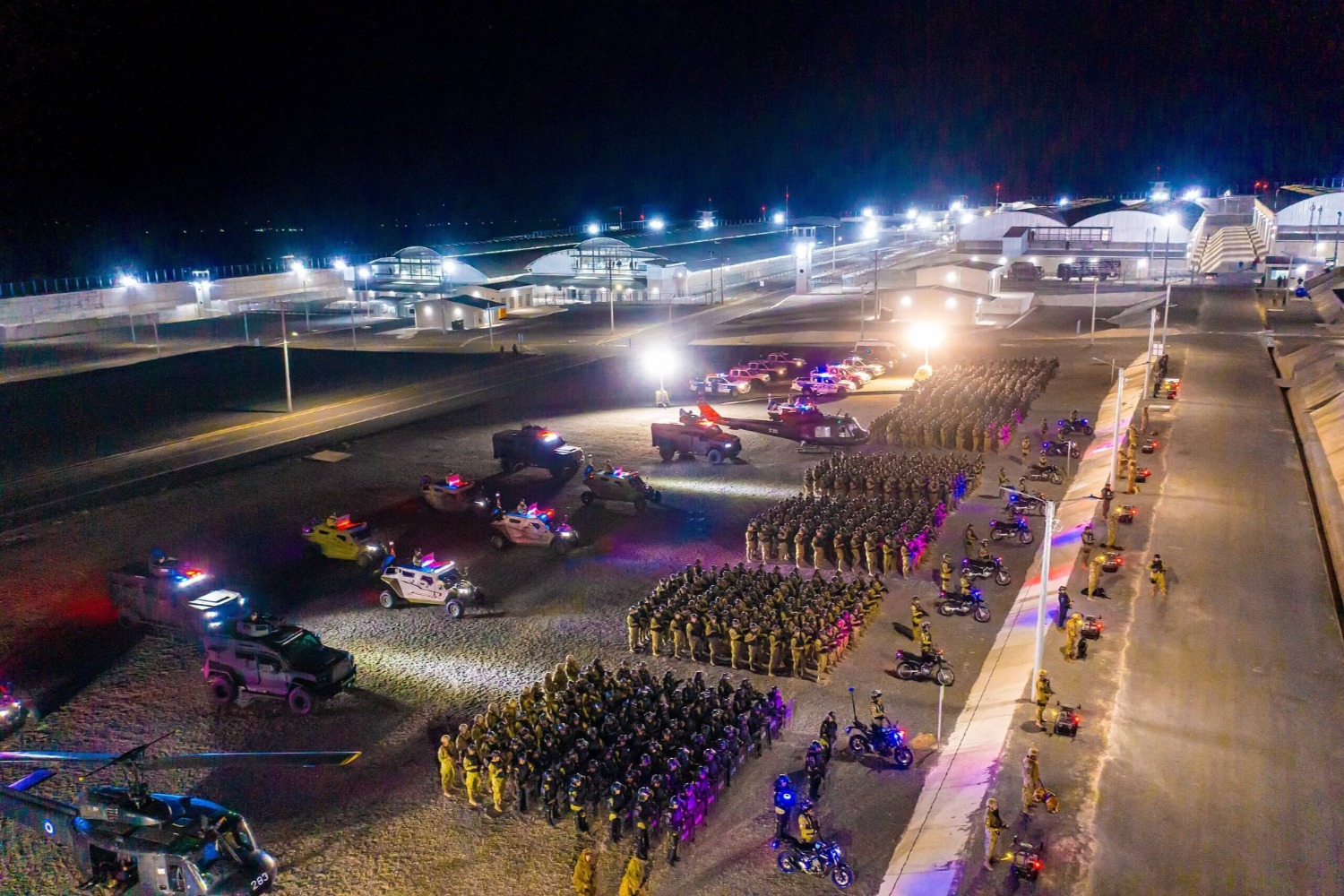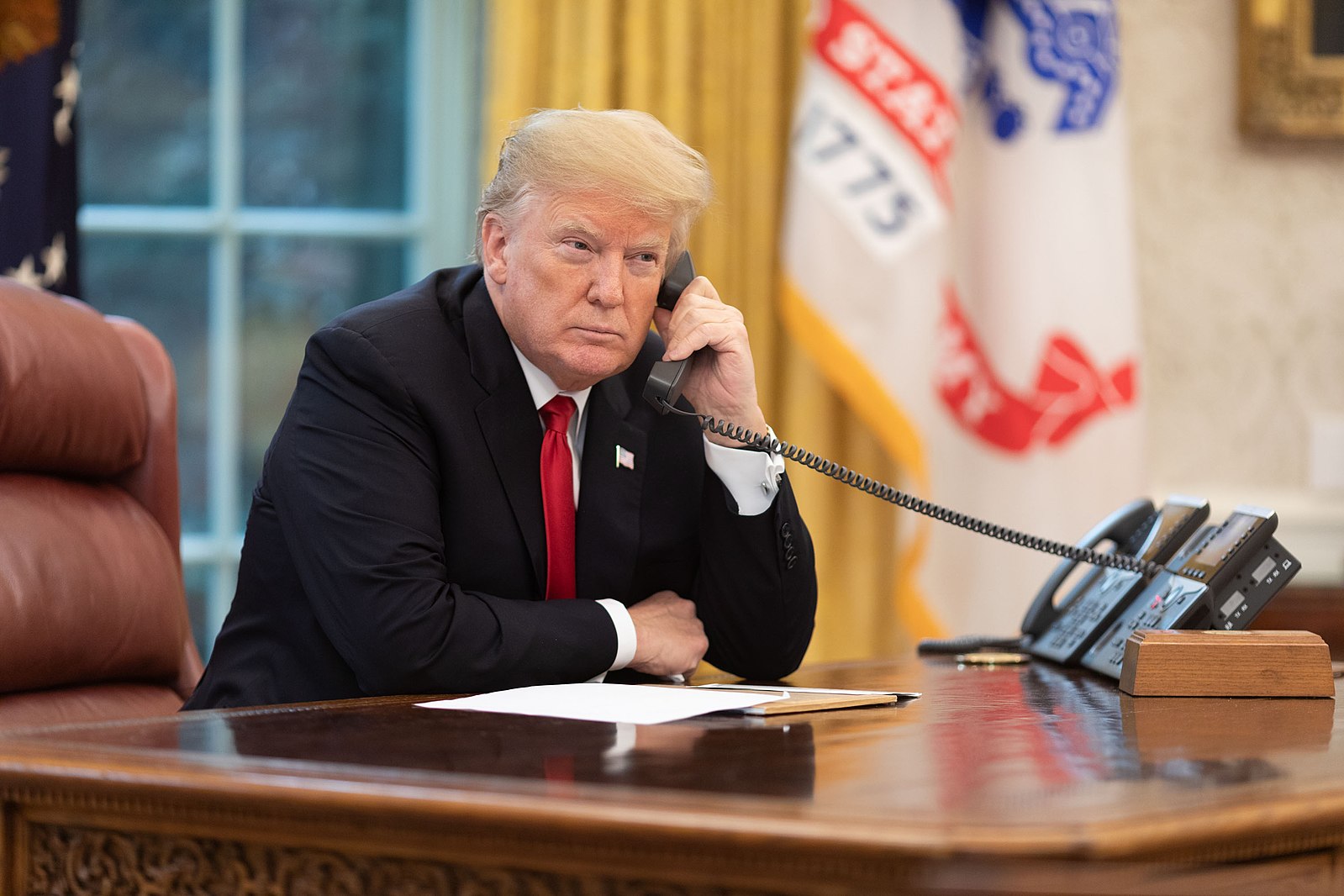The Travel Ban Decision and the Ghost of Korematsu
When the Supreme Court handed down its decision on the third iteration of President Trump’s travel ban, the morning unfolded largely as anticipated: By a 5-4 vote, the justices upheld the president’s proclamation on relatively narrow statutory grounds and chose to ignore his many expressions of hatred toward Muslims and Islam. There was a sharp dissent—in this case, by Justice Sonia Sotomayor. And there was, of course, a presidential tweet.

Published by The Lawfare Institute
in Cooperation With

When the Supreme Court handed down its decision on the third iteration of President Trump’s travel ban, the morning unfolded largely as anticipated: By a 5-4 vote, the justices upheld the president’s proclamation on relatively narrow statutory grounds and chose to ignore his many expressions of hatred toward Muslims and Islam. There was a sharp dissent—in this case, by Justice Sonia Sotomayor. And there was, of course, a presidential tweet.
SUPREME COURT UPHOLDS TRUMP TRAVEL BAN. Wow!
— Donald J. Trump (@realDonaldTrump) June 26, 2018
Less expected, tucked into Chief Justice John Roberts’s majority opinion, was the court’s condemnation of Korematsu v. United States.
The notorious 1944 ruling upholding the exclusion of Japanese-Americans from the West Coast has long been good law in the limited sense of never having been formally overturned (though it has never been cited as authority either). But “Korematsu was gravely wrong the day it was decided,” Roberts wrote, and “has been overruled in the court of history.” There is some disagreement among scholars as to whether this constitutes an actual overturning of Korematsu or merely disapproving dictum. Either way, I doubt anyone would have guessed that the formal repudiation of a decades-old low point in the Supreme Court’s history would have been among the results of Tuesday’s ruling on a matter that doesn’t touch internment.
Now that the opinions are written, however, the connection is clear enough, and both the majority and the dissenters draw it. The travel ban has been plagued from the start by comparisons to the internment of Japanese-Americans, both by advocates and judges themselves, and Justice Sotomayor’s dissent makes those parallels explicit. Nevertheless, there is more in Roberts’s summary rejection of Korematsu than a historical corrective or an effort to seize the moral high ground from Sotomayor. His struggle with the ugly legacy of 1944 is also a struggle with how the Supreme Court should address the problem of a president operating in bad faith.
Today the courts find themselves confronted with a presidency whose failings are less legal than moral and whose moral failings eclipse even the most correct legal justification that can be offered. Whether the travel ban can stand is, after all, a close legal question. The president’s conduct in promulgating it, by contrast, is not a close moral question. How separate to keep these domains is the central dispute between the majority and Justice Sotomayor; the latter takes a bolder approach to folding recognition of moral failing into the law, while the majority sets it gingerly outside the realm of what the court can do.
For the most part, Roberts’s opinion sticks methodically to the abstract issues of law. The chief justice deals with the statutory question of whether the travel ban overstepped the president’s authority under the Immigration and Nationality Act. He weighs whether the court may consider the president’s anti-Muslim statements in its analysis of the Establishment Clause question, and decides that it cannot. Although he writes that the justices “must consider not only the statements of a particular President, but also the authority of the Presidency itself,” he does allow himself to address, albeit obliquely, the mismatch between the presidency and this particular president:
The President of the United States possesses an extraordinary power to speak to his fellow citizens and on their behalf. Our Presidents have frequently used that power to espouse the principles of religious freedom and tolerance on which this Nation was founded. … Yet it cannot be denied that the Federal Government and the Presidents who have carried its laws into effect have—from the Nation’s earliest days—performed unevenly in living up to those inspiring words.
Roberts seems to be reassuring the country that, yes, he is aware of Trump’s campaign promise of a Muslim ban, and he may even be troubled by it—but these are not considerations properly incorporated into the court’s reasoning.
If that paragraph implicitly chides the president, Roberts’s citation to Korematsu chides Sotomayor for what he sees as her effort to gain “rhetorical advantage” by comparing the travel ban to internment in her dissent. Korematsu, he argues, concerned a “morally repugnant order”; the travel ban, in contrast, is “facially neutral.” Then, almost as an afterthought, he notes that Korematsu is no longer good law. Quoting Justice Robert Jackson’s dissent in that case, Roberts writes that Korematsu “has no place in law under the Constitution.”
Jackson’s dissent is most famous as a warning about the dangers of providing judicial approval to bold claims of executive power: “The principle then lies about like a loaded weapon, ready for the hand of any authority that can bring forward a plausible claim of an urgent need. Every repetition imbeds that principle more deeply in our law and thinking and expands it to new purposes.”
Roberts’s quotation of Jackson here is a bit mischievous, because when Jackson wrote that the military order at issue in Korematsu “has no place in law under the Constitution,” he didn’t mean that the order was unconstitutional. He meant literally that it had no place in law—that it was in a very real sense outside the bounds of the law, a matter beyond the reach of the Supreme Court’s power. His is a strange dissent, arguing both that he cannot enforce the exclusion order and that it is not his place as a justice to decide whether or not the order, declared as a matter of military necessity, is constitutional. When he warns about the loaded gun, his point is not just that the Supreme Court should not have upheld the constitutionality of the order but also that the court should have had nothing to do with the order—that is, that it should have declined to rule on the subject. There is, as he saw it, a danger to granting the legitimacy of law to something that should be understood to be outside of the law altogether.
Compare this to Roberts’s approach to the person of Donald Trump. Trump’s animus looms over the whole opinion. It is impossible to understand the travel ban without it, and Roberts seems to acknowledge this. He nevertheless insists that “the issue before us is not whether to denounce” Trump’s hateful comments, holding fast to the legal fiction of the division between this president and the presidency. The parallel between his opinion and Jackson’s is not exact. Jackson did, in the end, dissent from the court’s approbation of the executive’s exercise of power, though not from the president’s exercise of that power. Roberts, by contrast, affirmatively upheld the exercise of power. That said, both justices see a limit to what law can address and struggle with how to express that limit without eroding the institutional power of the courts.
While Justice Anthony Kennedy’s brief concurrence doesn’t cite Jackson, it echoes the Korematsu dissent as well. Kennedy writes:
The oath that all officials take to adhere to the Constitution is not confined to those spheres in which the Judiciary can correct or even comment upon what those officials say or do. Indeed, the very fact that an official may have broad discretion, discretion free from judicial scrutiny, makes it all the more imperative for him or her to adhere to the Constitution and to its meaning and its promise.
Kennedy, like Roberts, seems to be trying to square a president whose oath he does not trust with a structure of law that depends on that trust. And like Jackson, both Kennedy and Roberts end up drawing a boundary between what law can and cannot speak to.
To be clear, this is not an endorsement on the merits of either Roberts’s or Kennedy’s approaches, or even of Jackson’s dissent, which a wise lawyer once described to me as “somewhere between incomprehensible and indefensible.” Nor am I suggesting that all three opinions suffer from the same flaws or suffer from it to the same extent. It is, rather, to note that the three find themselves balanced on a similar precipice. As Bob Loeb characterized Kennedy’s concurrence, “In some contexts, we need to rely on the President to adhere to his oath of office.” Or as Jackson put it, “The chief restraint upon those who command the physical forces of the country, in the future as in the past, must be their responsibility to the political judgments of their contemporaries and to the moral judgments of history.”
As to the moral judgments of history, Sotomayor is more than willing to make herself their voice. Her dissent is an insistence, contra Roberts, that the travel ban must be understood as a product of this president: She spends seven pages setting out the history of Trump’s statements of anti-Muslim bias. While Roberts and Kennedy hint that they don’t trust the president’s oath of office but treat that trust as a non-justiciable question, Sotomayor repeatedly uses the metaphor of blindness to describe this unwillingness to confront Trump’s bad faith.
And she does so by pointing to Korematsu:
By blindly accepting the Government’s misguided invitation to sanction a discriminatory policy motivated by animosity toward a disfavored group, all in the name of a superficial claim of national security, the Court redeploys the same dangerous logic underlying Korematsu and merely replaces one "gravely wrong" decision with another.
Sotomayor notes that Trump himself made the comparison between his proposed Muslim ban and Japanese-American internment in December 2015, when he argued that President Franklin Delano Roosevelt “did the same thing” he was proposing.
I’ll leave to others the question of how historically apt this comparison might be and whether Sotomayor is justified in excoriating the majority for re-creating Korematsu’s reasoning. But, ironically, Sotomayor also cites Jackson’s dissent—specifically, his prediction that the Supreme Court’s upholding of the exclusion order would prove to be a more “subtle blow to liberty than the promulgation of the order itself.”
Importantly, however, Sotomayor also cites Justice Frank Murphy’s Korematsu dissent as well. Murphy’s opinion, like Jackson’s, is a strange and contradictory document. Where Jackson would have resolved the case by placing it outside the bounds of law altogether, Murphy was the only justice to address head-on the Supreme Court’s “legalization of racism.” Murphy’s dissent is a cry for moral clarity, next to which Jackson’s dissent is an act of moral cowardice, if legal rigor. Murphy’s dissent is less remembered than Jackson’s because it is also a shoddy work of legal reasoning. While Justice Hugo Black, writing for the majority, upholds the order under the exacting standard of strict scrutiny, Murphy evaluates it under the far more flexible standard of “reasonableness” yet somehow finds it constitutionally impermissible.
While many scholars dismiss Murphy’s legal reasoning and leave it at that, there is more to be said for his opinion. Murphy, unlike Jackson, had the courage to address the profound moral failing of both the executive branch and the Supreme Court for what it was. And for that reason, dismissing his dissent as poorly argued seems to miss at least one critical point. It is a point that the Supreme Court majority took until this week to catch up to and, even now, attributes to the wrong justice—a lion of the court, to be sure, but a lion who used his great intellect in this instance to cower while a much lesser mind stared the truth in the face.
Sotomayor’s opinion is much less legally slipshod than Murphy’s, but her citation of Murphy is an attempt to marshal his dissent’s moral power to critique the current majority. It’s an argument that, particularly in the context of the president’s often undisguised invidiousness in motive and purpose, “the pain and suffering [the travel ban] inflicts upon countless families and individuals” can and must be incorporated into the court’s evaluation of the case, even though it lies outside the bare formal question of whether or not Donald Trump has the authority to exclude people from the United States on the basis of nationality alone.
While scholars of presidential power will debate for years to come whether the opinion of the court majority or Sotomayor’s dissent has the stronger legal case, Sotomayor’s opinion has a certain moral urgency of which Roberts and the majority have intentionally purged themselves. Roberts and Kennedy may be right as a technical matter that the president’s oath is not for the Supreme Court to judge. But their opinions, particularly by invoking Korematsu, raise anew the question that Jackson’s Korematsu dissent has long posed: What does it mean, in the face of profound ugliness on the part of the executive branch, to declare the judgment of that ugliness to have “no place in law”?





